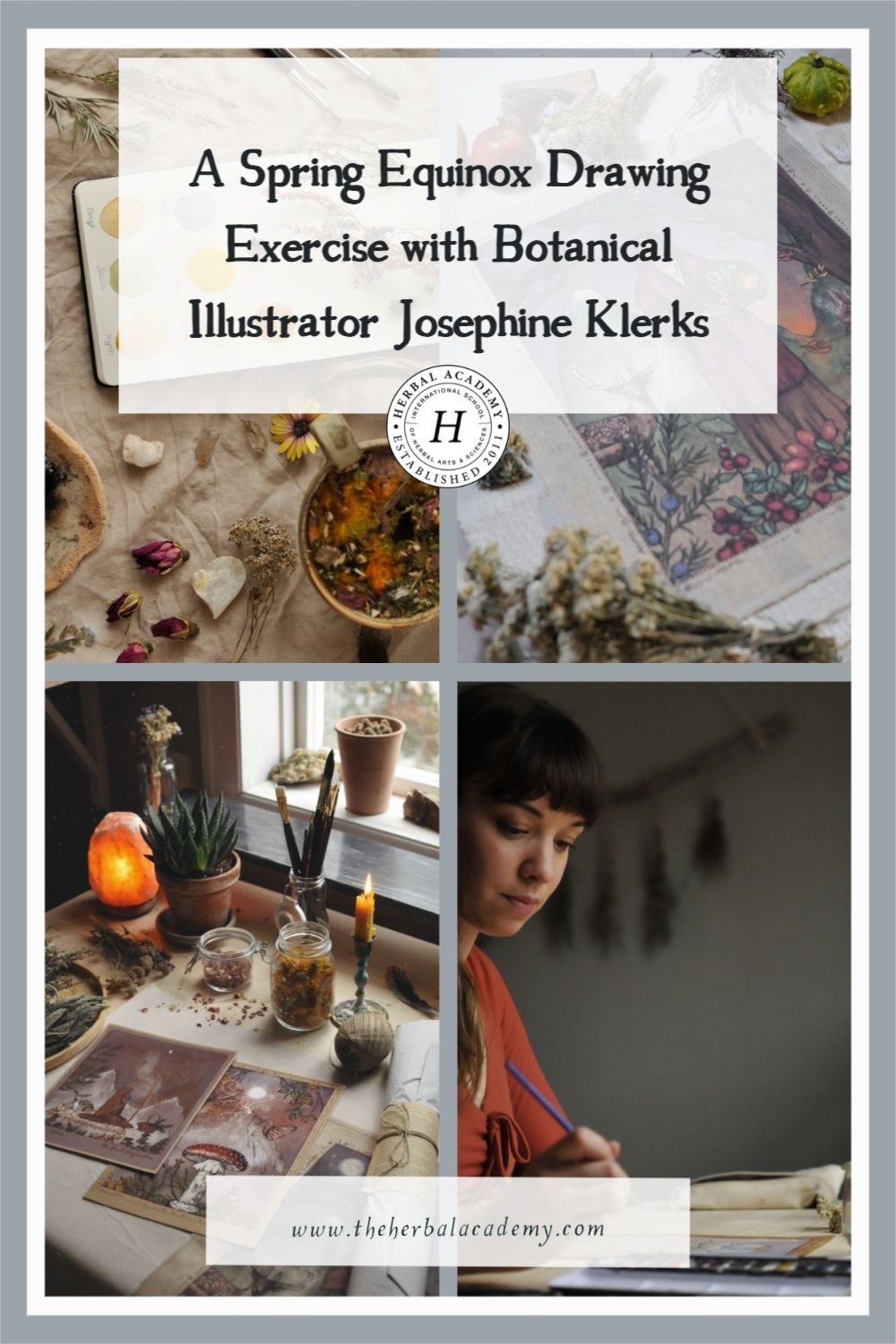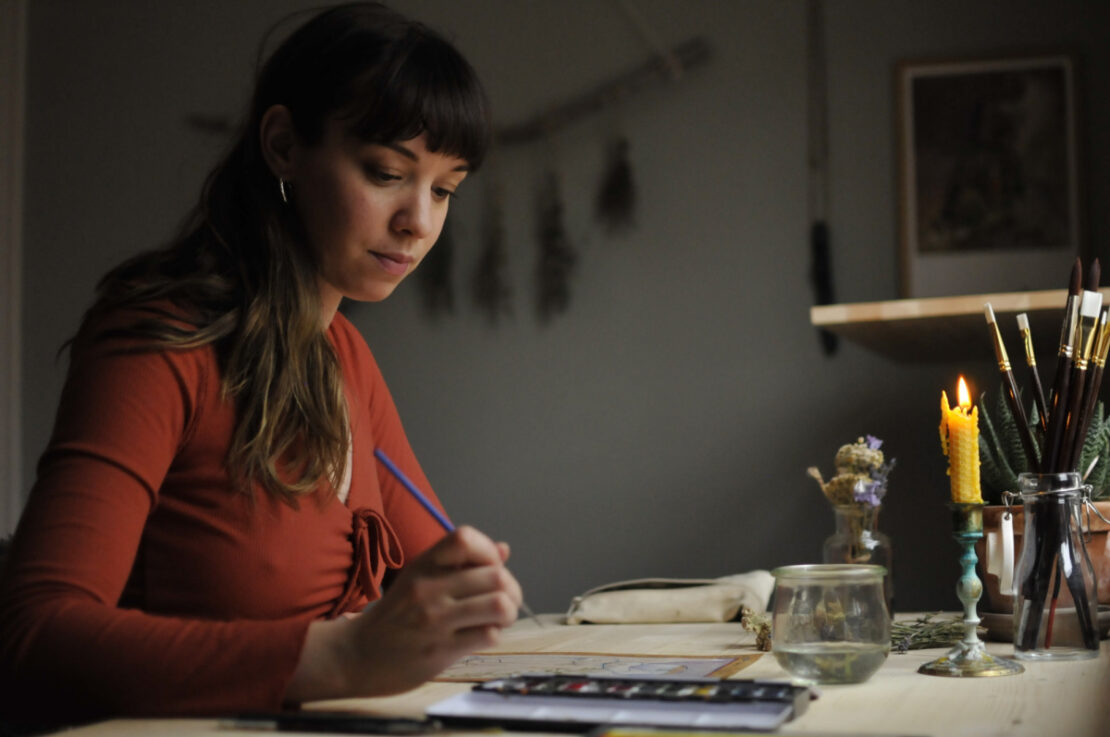
A Spring Equinox Drawing Exercise with Botanical Illustrator Joséphine Klerks
As we’ve worked behind the scenes on our new drawing exercise mini course, Botanical Drawing for Herbalists, we’ve spent many hours oohing and awwing over the incredible artwork produced by talented botanical illustrators of our day. One artist who regularly catches our attention with Earth-centered illustrations that capture the spirits of medicinal plants is Joséphine Klerks.
Joséphine is the artist, illustrator, mother, and herbalist behind SoulArt Klerks, a print and textile studio headquartered in the wild woods of Sweden. We are so honored to have the opportunity to chat with Joséphine about her artwork and the many ways that it’s inspired by herbalism and nature. With the Spring Equinox right around the corner, Joséphine also shared a wonderful drawing exercise that will help you get outside and connect with the seasonal shift.
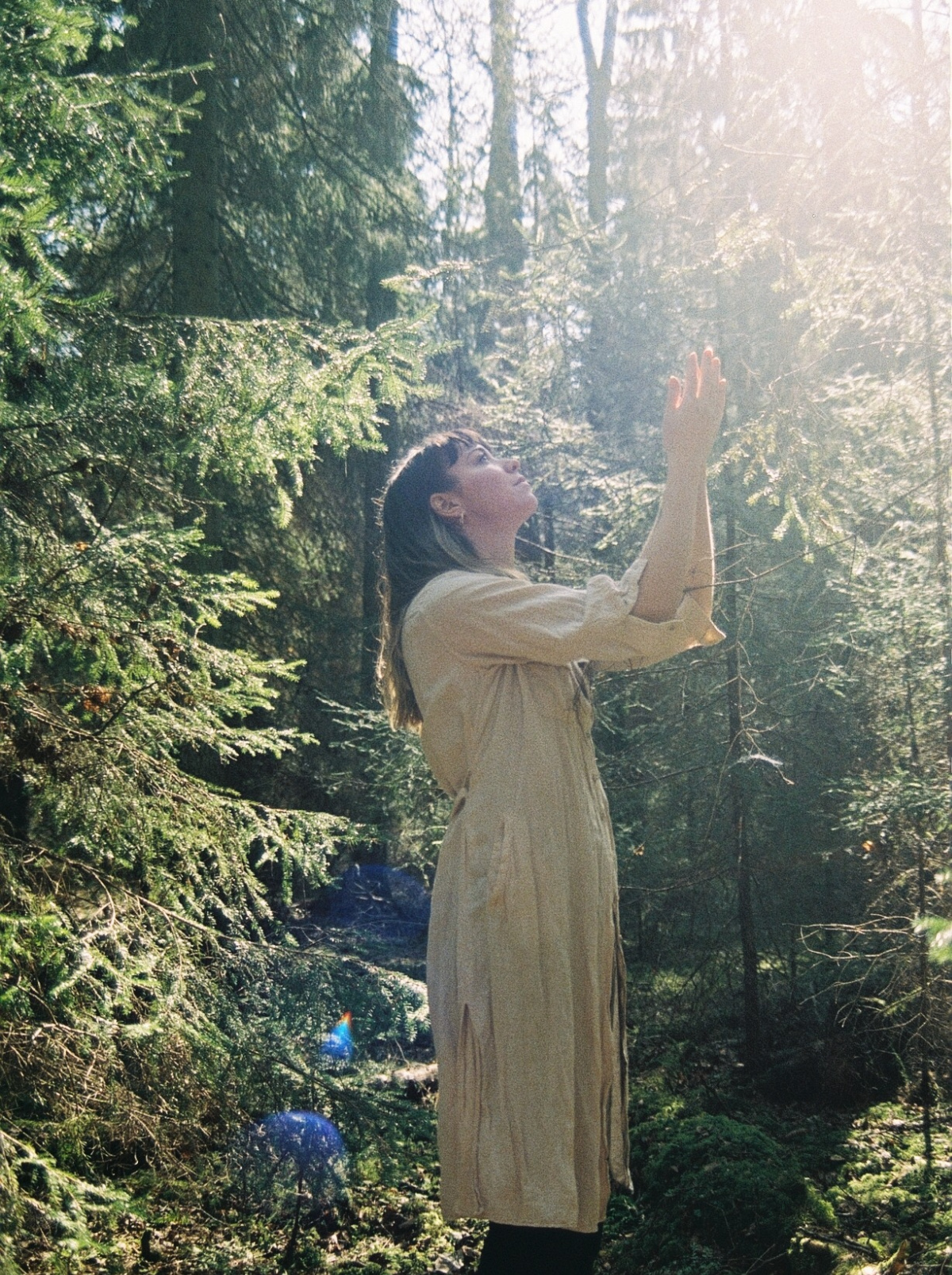
Credit: Sara Frank
HA: Hi Joséphine! Thanks so much for taking the time to chat with us today. Will you please share a bit about yourself and the type of artwork that you create?
Joséphine: My art is very much a combination of the work I do with herbalism, crafting, and motherhood. I really feel they are all intertwined. I believe we are many things, and the artwork combining herbalism and motherhood is the path I’m walking right now.
My creative work is very centered around connecting with my true essence, which is nature. We’re all nature. Noone lives by themselves in isolation, and that’s at the core of what I want to come in contact with.
I love to paint the visions I receive from nature, and there’s so much magic to be found, even in the smallest moments.
This everyday magic is something that really inspires my work. It doesn’t have to be complex, but it’s there, waiting for our attention.
Connecting with my roots is another big thing I’m focusing on right now. I have mixed heritage – Finnish and Dutch and Indonesian, so it’s very widespread and I’m trying to figure out all the connections. I feel very connected to this Northern land where I live and the mythology, but I’m also very connected to the Asain, Buddhist, and Hindu traditions, so it’s a wide mix that I love diving into.
HA: How do you describe your artistic style?
Joséphine: My style is a combination of the Divine Feminine, which for me is really connected to nature and the cycles of nature. My style has really evolved over the years, and I’ve explored a lot of techniques to find my way and find what I want to say with my art.
When I birthed my son, I felt something shift. I also felt a shift when I came in touch with herbalism and gardening and I started to connect more with nature and the Earth. Something happened in my art at that time; I really felt like it was catalyzed into something new, which felt very aligned with who I was becoming.
I love the animistic philosophy that all creatures are seen as animated and alive and that they hold some sort of spiritual essence. It can be plants, animals, rocks, the weather, human handicraft – I really feel like those viewpoints are centered in my work. This grand web of interrelatedness is something that I hope to express in my artwork.
Just looking at plants, they are so beautiful in so many ways. Just a painting of a flower doesn’t have to be a complex drawing exercise, it’s just beautiful as it is.
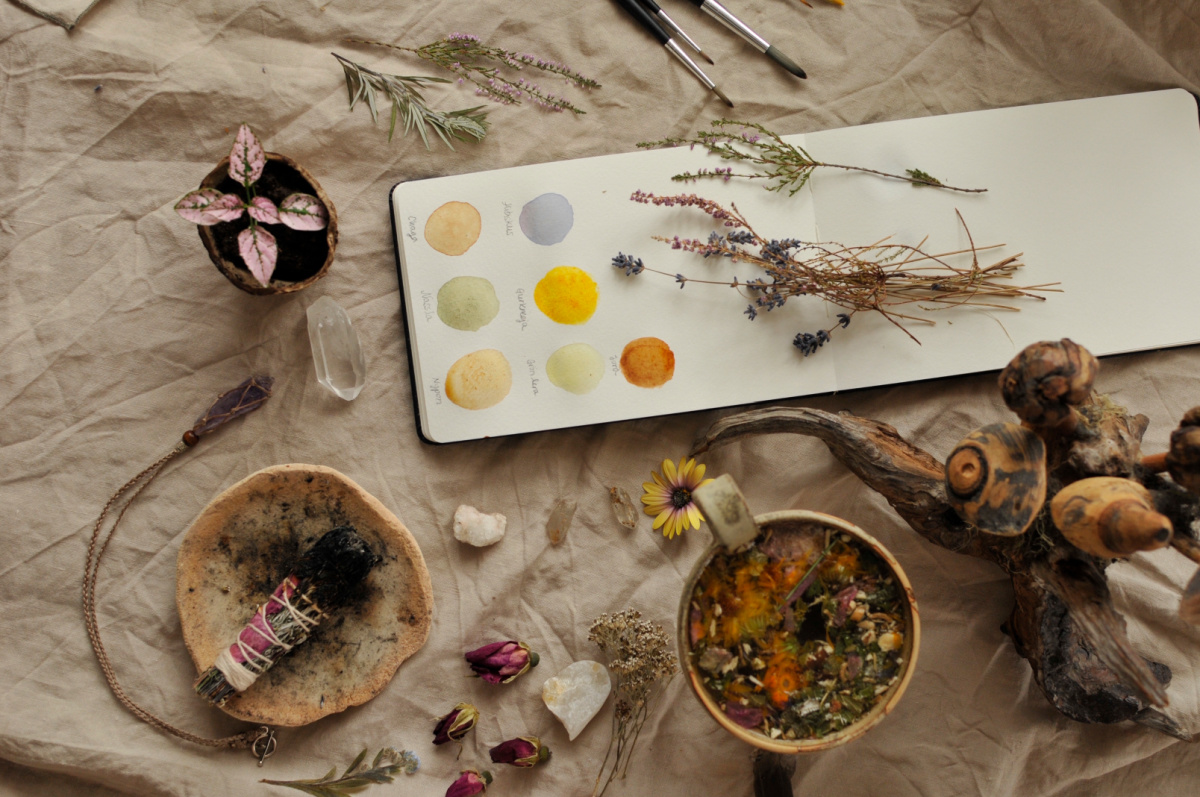
HA: What medium do you mainly use for your artwork?
Joséphine: I use a mix of mediums, including watercolor, ink, colored pencils, and pastel crayons. I have recently started to explore using herbal pigments that I make into watercolors!
I also sometimes use digital techniques with a drawing board, and I love to combine and layer it with other mediums. Now that I’m a mother of a two-year-old son, I don’t have as much time as I used to have, so painting digitally also speeds up the process a bit, which is especially helpful when I’m working on large commissions.
HA: How do herbalism and nature inspire your artwork?
Joséphine: Working with plants is a way to acknowledge where I come from and also a way to connect with the spirits of the land. In many traditional societies, arts and crafts have also played a huge part in women’s roles, and I can feel the same creative force inside of me when I create with herbs and commune with them.
I really do feel like I find magic and inspiration in nature. It can be the way the sun is filtering through the trees, or just thinking about the complex intelligence in nature is mind-blowing. So just to observe these small details in nature is a huge inspiration.
Nature is also a place where I feel completely myself. Nature doesn’t judge, which I also feel is so special. It’s a place where we can feel a true sense of belonging.
Studying plants has also shown me that the microcosmos is mirrored in the macrocosmic. So we can find patterns of life itself in many creatures and in nature.
My garden is also a big sense of inspiration for me. We recently moved, so I’m in the process of planting a new garden now, and my artwork is very interconnected with my garden as well. It’s so lovely to go out in the garden and take care of the plants.

HA: Many of your prints, like Hawthorn Spirit and Mother Rose show your interpretation of the spirit of the plants you work with, and the images are full of beautiful, intuitive symbolism. How do you choose which plants to use for a drawing exercise, and how do you connect with the plants in a way that helps you understand and interpret their spirits?
Joséphine: Plants really have some sort of effect on me to open a portal of memories. I also feel like they all have stories to tell us if we just tune into their realm. The main way I connect with them is to simply sit with them in meditation. When I started to practice a more heart-centered meditation style I was able to tune in and commune with the plants more. The whole experience is very much through the heart center rather than the intellect and the head. I also feel like the heart center is connected, in a way, to the intuitive self. I started to notice a shift when I moved into that heart center. I perceived Earth as more alive.
I also love to connect with plants through dreamwork. I especially like working with mugwort (Artemisia sp.). Dreaming with this herb is such a powerful way to connect.
Sometimes I feel like plants are in this constant dream state, and I feel like I receive visions when I dream with the plants.
I also love to read about the history of plants. I’m very drawn to the old Western alchemy traditions, and also the history and mythology around plants. It’s very interesting to think about how those myths were formed, and I like to connect with those stories.
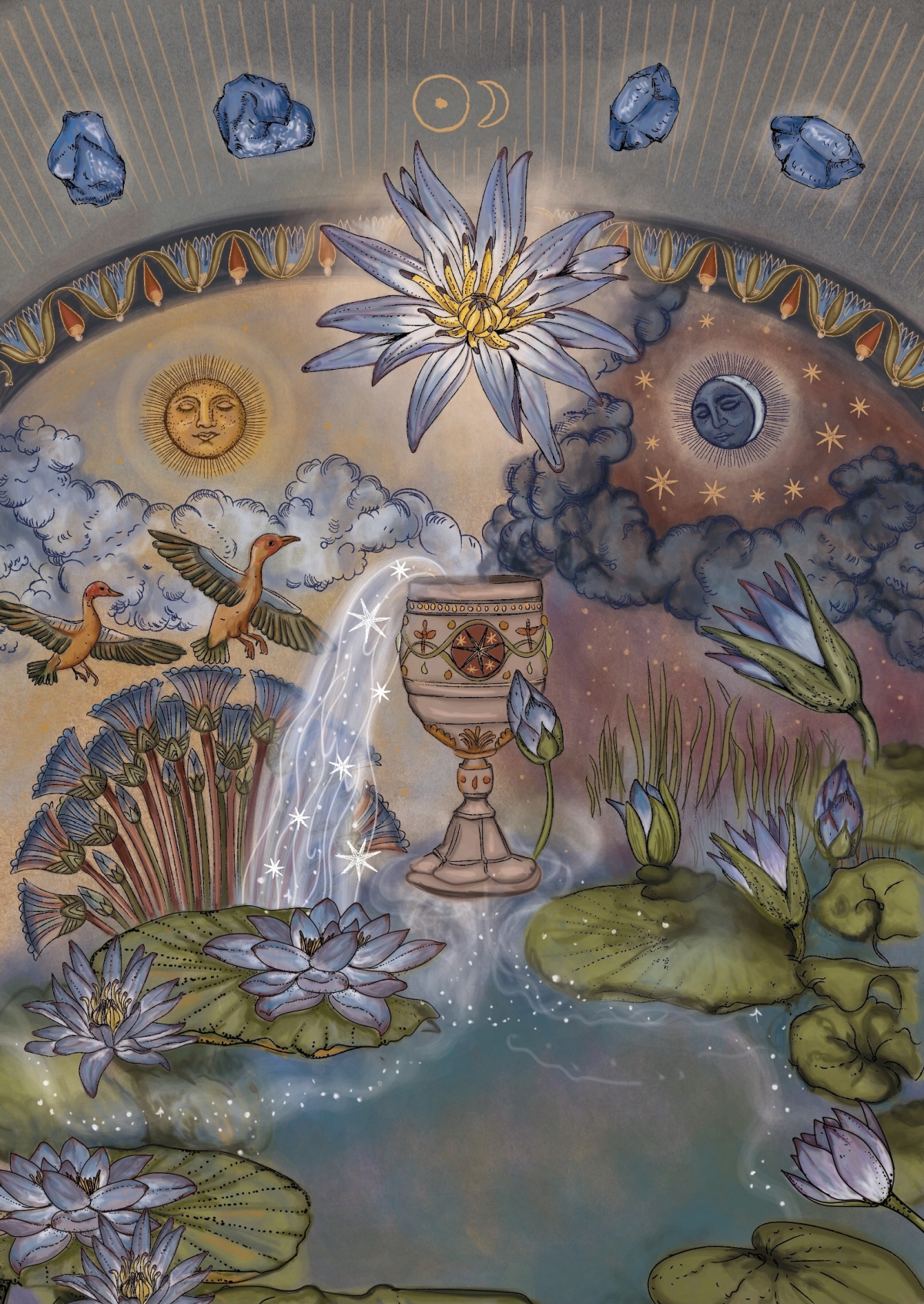
HA: The Spring Equinox is right around the corner and we know that your artwork is very inspired by the plants and the seasons. Do you have a solstice-inspired drawing exercise that you could share with us?
Joséphine: The Spring Equinox is a time of new beginnings and growth, fertility, and light after the long winters. Here in the far North, it’s amazing to see how the spring comes up. When it comes to this season, the sounds in nature are really shifting. You can hear the ice melting, the birds singing, and even the wind sounds different. This drawing exercise plays off of those sounds and is designed to help you let go of control to just have fun and connect with the seasonal shift.
This exercise is a twist on landscape drawing, but instead of drawing what you see, you will draw what you hear and/or feel.
- Bring your drawing supplies on a walk and welcome the plant beings around you. Notice if you see or feel any shifts in the season. Take a moment to consciously slow your breathing, and for each step you take, imagine that you are grounding yourself and that your feet are kissing the Earth.
- Choose a lovely place out in nature—it could be under your favorite tree, on a mountaintop, by the sea, or in a garden—anywhere that calls to you.
- Start with a simple form of meditation, becoming aware of the closest sound to you, which is your breath. With every breath, visualize bringing warmth and love into your heart.
- When you feel relaxed and grounded after a few rounds of inhaling and exhaling, start paying closer attention to the sounds around you. Pick one sound and listen to it until it’s too far away. Do this with a few different sounds. (It can be helpful to set a timer for 10 minutes on this practice.)
- When your time is up, slowly open your eyes and become aware of the landscape around you. Notice the details and breathe in the crisp spring air.
- Now it’s time to draw the sounds you just experienced. The most important thing is to let go of prestige and control and just have fun—no judging!
- When you’re done with this practice, leave something in nature as a thank you. It can be a song or a word of gratitude. From here, I invite you to close off your ritual in the way that feels most true for you, perhaps you could dance, shake it out, or sing.
**If you are deaf or hard of hearing, you can do this same practice, but instead of following the sounds, tune into how the wind is feeling around you. How does it touch your body? Imagine the boundary of your skin as a connection to a larger part of you. Does the wind bring certain smells or memories connected with this new cycle? Do you feel a sense of hope in the wind or maybe a special message? Draw what you feel.
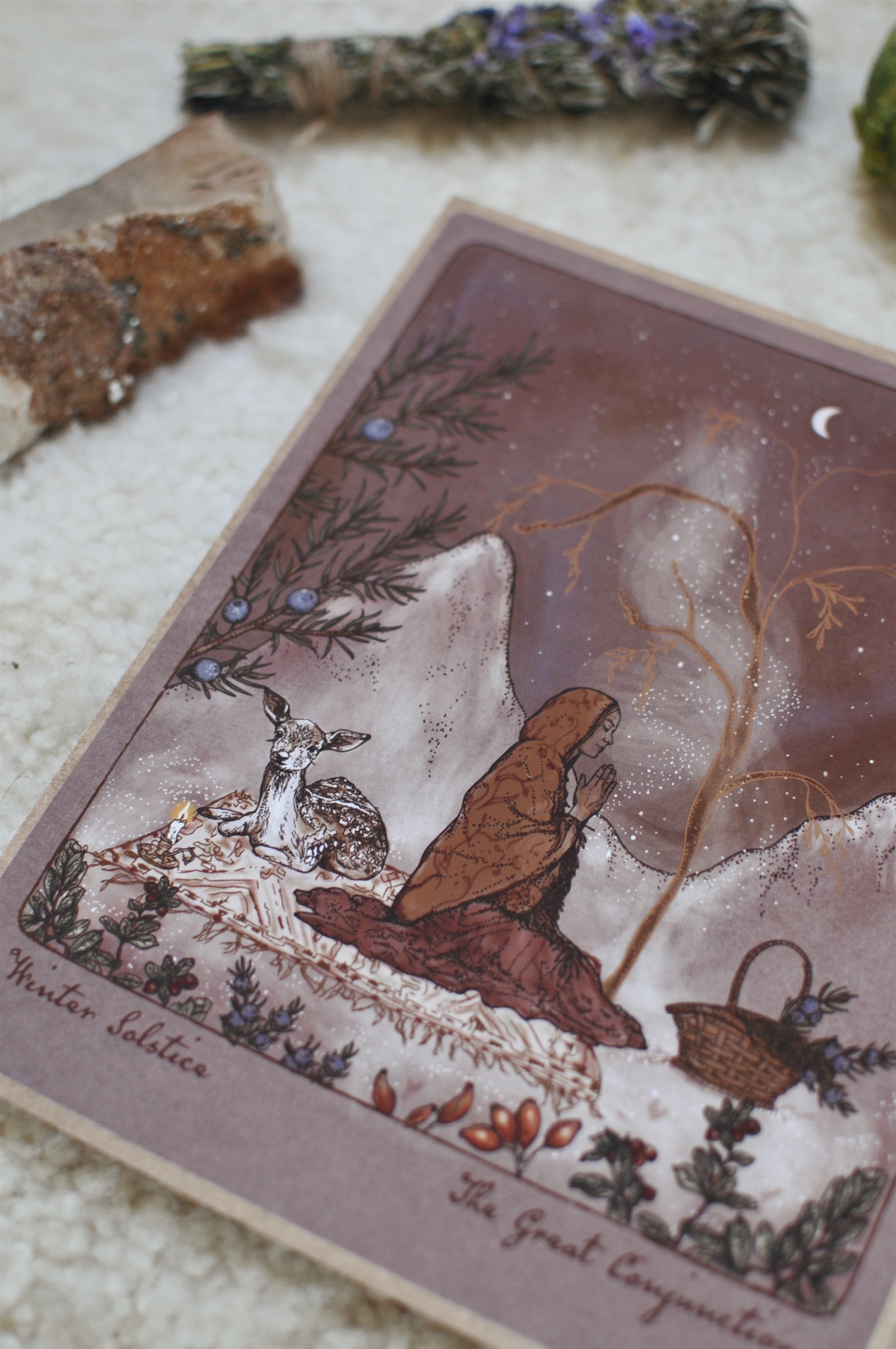
HA: What a lovely practice! Before we wrap up, we’d love to chat a bit more about your herbal journey. Have you taken any herbal courses, or are you entirely self-taught?
Joséphine: Yes, I’m currently enrolled in the Herbal Academy’s Botanical Skin Care Course, which is amazing!
I also took Asia Suler’s online course called Intuitive Plant Medicine a few years ago, and that was really eye-opening for me because there were a lot of tools about how to commune with plants through dreamwork, flower essences, meditation, and more. I really loved that.
I also have two close friends who I used to live with, and they have an alchemy lab where they produce spagyric tinctures that they sell here in Europe. I have learned a lot from them about how to prepare and make wonderful medicines.
HA: How do you bring herbalism into your daily life? Is there a specific plant or recipe that you turn to often?
Joséphine: I enjoy using mugwort tea, tincture, and smoke for dreamwork. We have a lot of options here in the North for using herbs as smoke medicine through burning, and I feel that smoke is a beautiful way to work with plants because, in a way, it helps breech our two worlds.
I also make a lot of herb-infused oils. That’s one of my favorite ways to practice herbalism, and sometimes I use the oils for salve making. I really love everyday self-care and small rituals to nourish your skin.
I’m also a big tea drinker. I’ve never loved coffee, so I drink a lot of tea. I really love lavender (Lavandula spp.) and rosemary (Salvia rosmarinus) for tea because they feel so cleansing. I also drink nettle every morning, it’s so nourishing and I can feel in my hair and nails that it’s good for me and it strengthens them.
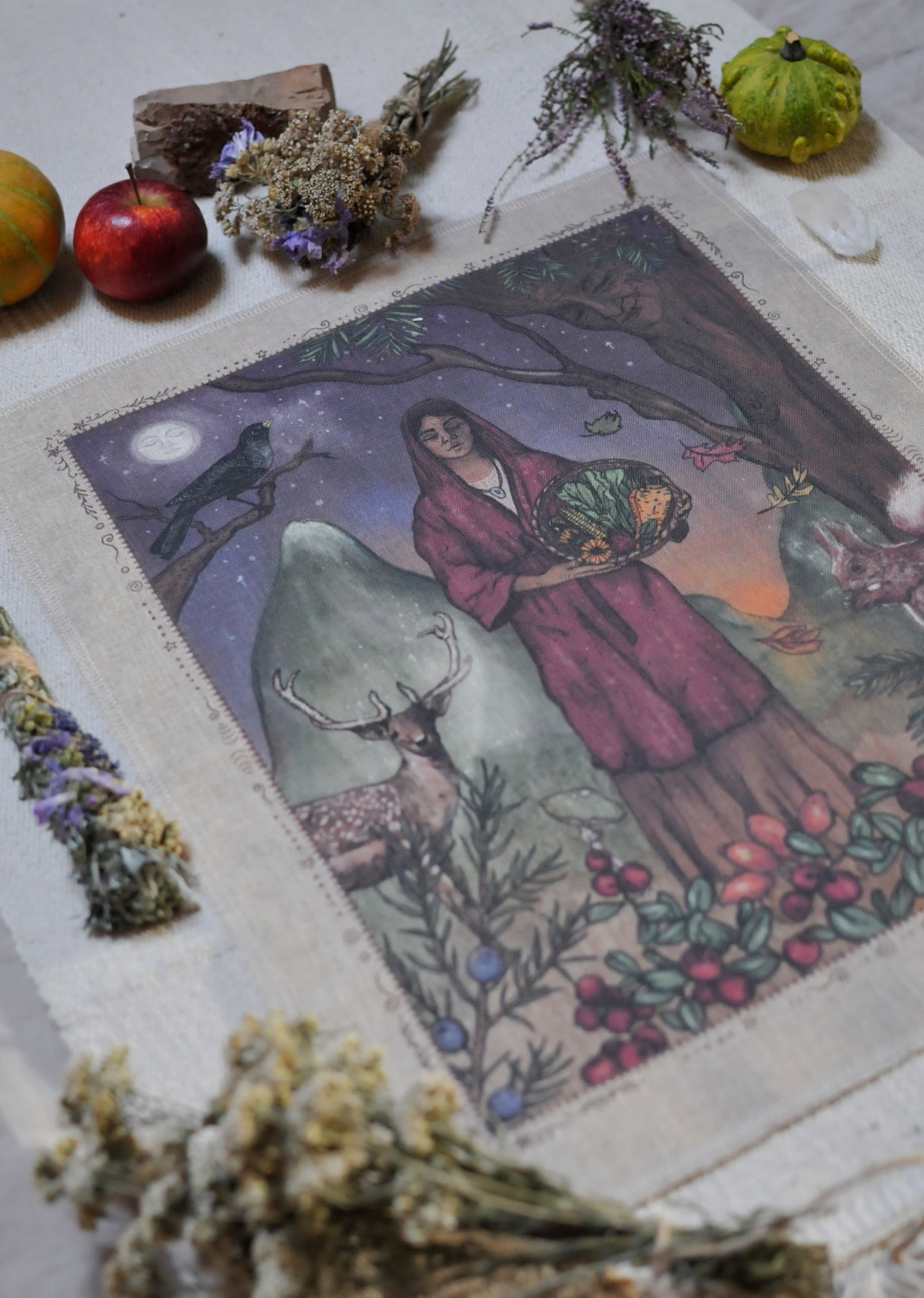
HA: Where can our followers find your artwork and connect with you personally?
Joséphine: My website is www.JosephineKlerks.com, my Instagram is @soulart.klerks and on Facebook at @JosephineKlerksSoulArtKlerks.
If you’re inspired by Joséphine’s nature-based artwork and also want to connect with herbs through illustration, then we hope you’ll join us in our new mini course, Botanical Drawing for Herbalists. This self-paced, online course will teach you everything you need to know to create beautiful and accurate botanical illustrations from start to finish. We hope you’ll join us on this creative journey from plant to page!
Learn more or enroll in the Botanical Drawing for Herbalists course, here.
